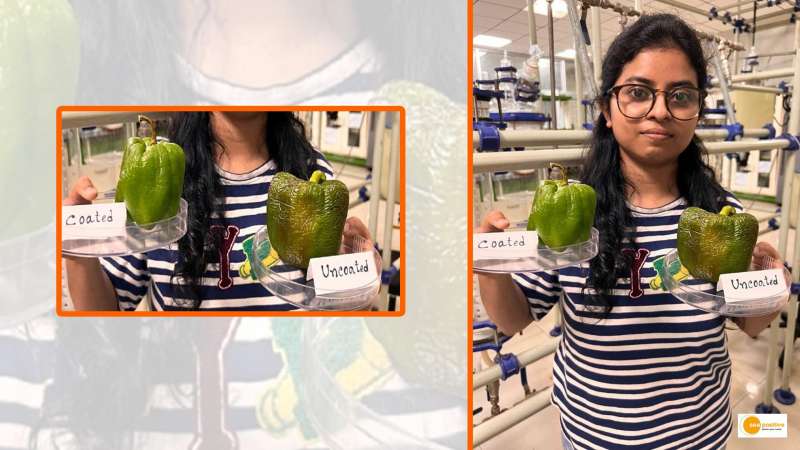

Researchers at IIT Guwahati have developed an edible coating that can extend the shelf-life of fruits and vegetables. Designed to reduce food waste, the researchers discovered that the coating can keep produce fresh for much longer than would otherwise be possible.
The coating was tested on a variety of vegetables and fruits, including potatoes, tomatoes, green chilies, strawberries, mandarin oranges, apples, pineapples, and kiwis.
“It can help preserve vegetables and fruits for as long as two months. For example, coating ripe tomatoes increased the shelf life of tomatoes by close to one month when compared to uncoated tomatoes, when stored under ambient temperatures. Also, it is difficult to keep strawberries fresh for more than 5 days. But with our coating, ripe strawberries can be preserved for more than 20 days,” Vimal Katiyar told.
Katiyar led the research and is a professor at the Department of Chemical Engineering and Centre for Excellence in Sustainable Polymers at IIT Guwahati.
Specialised coating created by combining two substances
The specialised coating was created by combining two substances: micro-algae extract and polysaccharides. The extract is derived from the marine microalgae Dunaliella tertiolecta, which is commonly used as a source of algae oil, a health supplement that is a plant-based alternative to fish oil. Typically, a residue from the extraction of algae oil is discarded.
Extracts from this residue were used by Katiyar and his team to create their film coating. The residue was combined with Chitosan, a sugar made by treating the outer skeleton of shellfish, to create an edible film.
Over the past six years, Katiyar and his team have been creating different versions of these coatings based on the fruits and vegetables they use.
“The end user does not require any special knowledge or machinery to apply the coating. These are very simple solutions that can be applied very easily. Farmers already used to use such produce handling solutions on a day-to-day basis,” said Katiyar.
Biosafety was determined by treating BHK-21 cells with materials
The biosafety of these coatings was determined by treating BHK-21 cells with the materials. These cells are derived from baby hamster kidneys and are used in toxicology research. Based on the results of these tests, the researchers concluded that the materials are non-toxic and could be used safely as edible produce coating. Katiyar did not say whether the coating needs to be studied to determine its long-term impact on health.
Also, Katiyar did not comment on what the material would cost right now but did say that it is ready to be turned into a commercial product. “Now, we are ready to bring it to commercial scale with the support of industries. I would like to ask the industries to help bring this important innovation to the market so that it can enhance farmers’ incomes,” he added.


